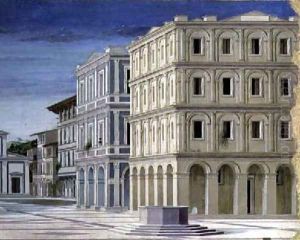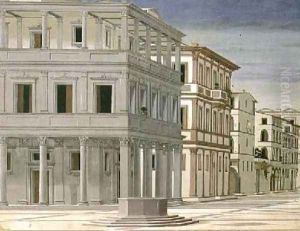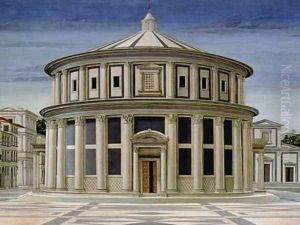Luciano Laurana Paintings
Luciano Laurana was an Italian architect and engineer from the Renaissance period, renowned for his significant contribution to the development of Renaissance architecture. Born around 1420 in Vrana, Dalmatia (modern-day Croatia), Laurana moved to Italy to pursue his career, where he became one of the pivotal figures in the transition from medieval to Renaissance architecture. His exact date of birth is not precisely known, but his works and influence place his active period well within the 15th century.
Laurana is best known for his work on the Ducal Palace of Urbino, in the Marche region of Italy, where he is believed to have been largely responsible for the design and construction of the palace's famed façade and courtyard, which are considered masterpieces of High Renaissance architecture. His designs for the palace emphasized classical symmetry, proportion, and harmony, elements that were deeply influential in the architecture of the period and that echoed the humanist values of the Renaissance.
Besides the Ducal Palace, Laurana's architectural projects included the design of public squares, fortifications, and other palatial structures, although much of his work outside of Urbana is less documented and has been overshadowed by his contemporaries. Despite this, his influence on Renaissance architecture, particularly in the development of palatial architecture and the integration of classical elements into modern design, was significant.
Laurana's work extended beyond architecture into the realm of urban planning and fortification, reflecting the broader interests and talents of Renaissance artists who often engaged in multiple disciplines. His contributions to the visual arts also included some work in sculpture and perspective drawing, showcasing the multi-talented nature of artists of his time.
Luciano Laurana died in 1479, leaving behind a legacy that would influence Italian Renaissance architecture and the development of European art and architecture for centuries. His work at Urbino remains one of the most studied and admired examples of Renaissance architecture, embodying the ideals of beauty, symmetry, and proportion that define the era.



